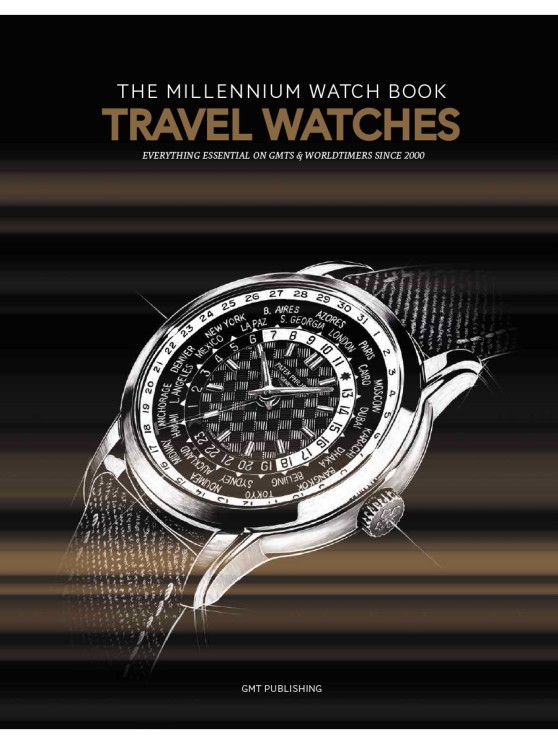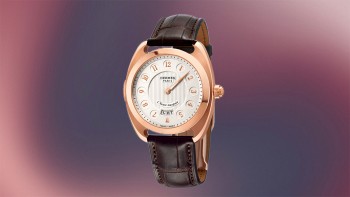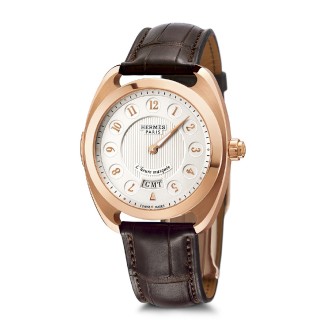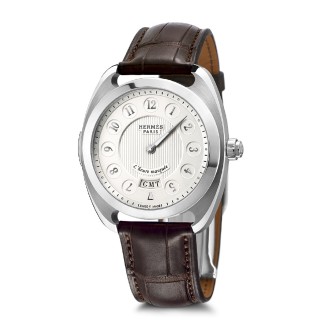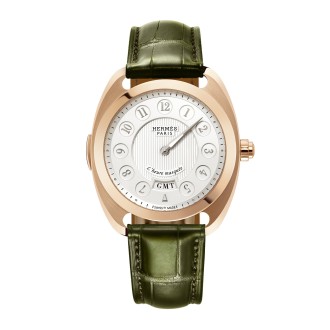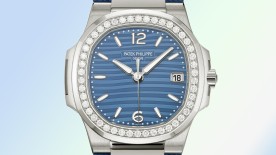Time is much too important a concept to be taken seriously; or at least that seems to be how Hermès approaches watchmaking. Since the mid-2000s, the Parisian brand has constantly devised new ways of displaying the time, telling the time and even thinking about time.
With an undeniable flair for eccentricity and elegance combined (as well as the help of its historic facilities near Bienne) La Montre Hermès has never failed to come up with astounding concepts, including this Dressage and its lack of an hour display – unless you ask it nicely, in which case it responds twice over. Indeed, it turns out to be a GMT watch, though you’d never suspect it.
Subjectivity
The Dressage L’heure masquée is an ‘on-demand display’ watch. It does have a central minutes display and a window on the dial bearing the inscription ‘GMT’, but that’s it; there are no seconds, no hours hand and no date to be seen. A pusher located in the crown enables the current hour of the day to be displayed by revealing the hours hand (otherwise concealed beneath the minutes hand) and at the same time replacing the GMT abbreviation by a second hours display, with the minutes hand serving for both time zone.
Releasing the pusher covers the second hours display and returns the hours hand to its hiding place beneath the minutes hand, even if the latter has moved on several minutes, hinting at just how complex the Dressage L’heure masquée actually is. With this timepiece, Hermès offers the wearer a lifestyle choice and a whole new way of relating to the day in progress, based on the assumption that we always have at least some idea of what time it is: our habits and routines tell us it must be something past 8 am, because it’s time we were heading out the door; somewhere towards noon, because our tummy’s rumbling; or 6 pm, because the December sun has set.
All we really need is to check how many minutes it is past the hour we’re instinctively aware of. And if we’re really not sure and need to know the precise time (or want to look just for fun), or more especially when we need to check what time it is somewhere else, we can do so at the push of a button. Indeed, the timepiece is something of a rejoinder to the one-hand watches offering nothing more than an hours hand, with the wearer left to make a rough approximation of the more accurate time to within 5 or 10 minutes.
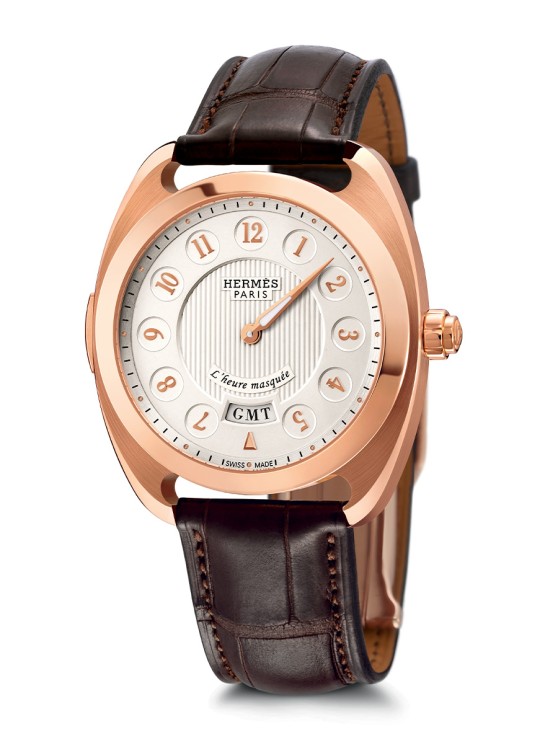
That little bit of difference
The timepiece isn’t really trying to force people to tell the time in any particular way; like other creative time displays, it’s more of an intellectual exercise designed to appeal to a select audience. With this in mind, it was released just once, as a 500-piece limited edition in rose gold and a further 1000 in steel. Like many other similar Hermès projects, it also served another purpose: presenting the brand as having a distinctive worldview, for clients who also stand out from the crowd; those that curate their time and their passions and see Hermès as a choice companion.
Another important point (as its management has acknowledged) is that then as now La Montre Hermès was seen as a brand selling mass-produced quartz-powered jewelled watches. The brand’s vision-casting mechanical timepieces aim instead to put Hermès watchmaking on a par with the prestige and creativity of its other ranges. If the recent growth in its business and the acclaim for each of its new releases are anything to go by, this goal has been achieved.
The fact is that Hermès has always had a knack for bringing its own perspective to classic watchmaking style codes, offering its distinctive take on well-established and indeed historical features. The on-demand display concept is typical of this approach; it’s very rarely used and quite demanding, depending as it does on a system of cams, racks and a clutch mechanism that make it somewhat akin in principle to a chronograph.
Calibre H1925 thus has two levels: the first (the base movement) provides the time, while the second houses the display complication. The two are connected via a component in the display system that’s linked to one in the time-telling half when the pusher is activated. It’s an apparently straightforward technical procedure that gave rise to a unique concept – and that in itself is a Hermès hallmark.
Dressage L’heure masquée
Case: 5N rose gold, sapphire crystal and caseback; water resistant to 50m
Size: 40.5 x 38.4mm
Movement: self-winding mechanical movement; Calibre H1925, 28,800vph (4Hz), 45-hour power reserve
Functions: central minutes display, central hours display on demand, second time zone on demand at 6 o’clock
Dial: silvered opaline, vertical guilloché centre, luminous hands
Strap: brown alligator, rose gold folding clasp
Limited edition of 500
Launch year: 2014
This year, GMT Magazine and WorldTempus have embarked on an ambitious project: summarising GMT and Worldtimer watches since 2000 in The Millennium Watch Book - Travel Watches, a beautifully laid-out coffee table book. This article is an excerpt of the book. The Millennium Watch Book - Travel Watches is available for preorder in both French and English here.
